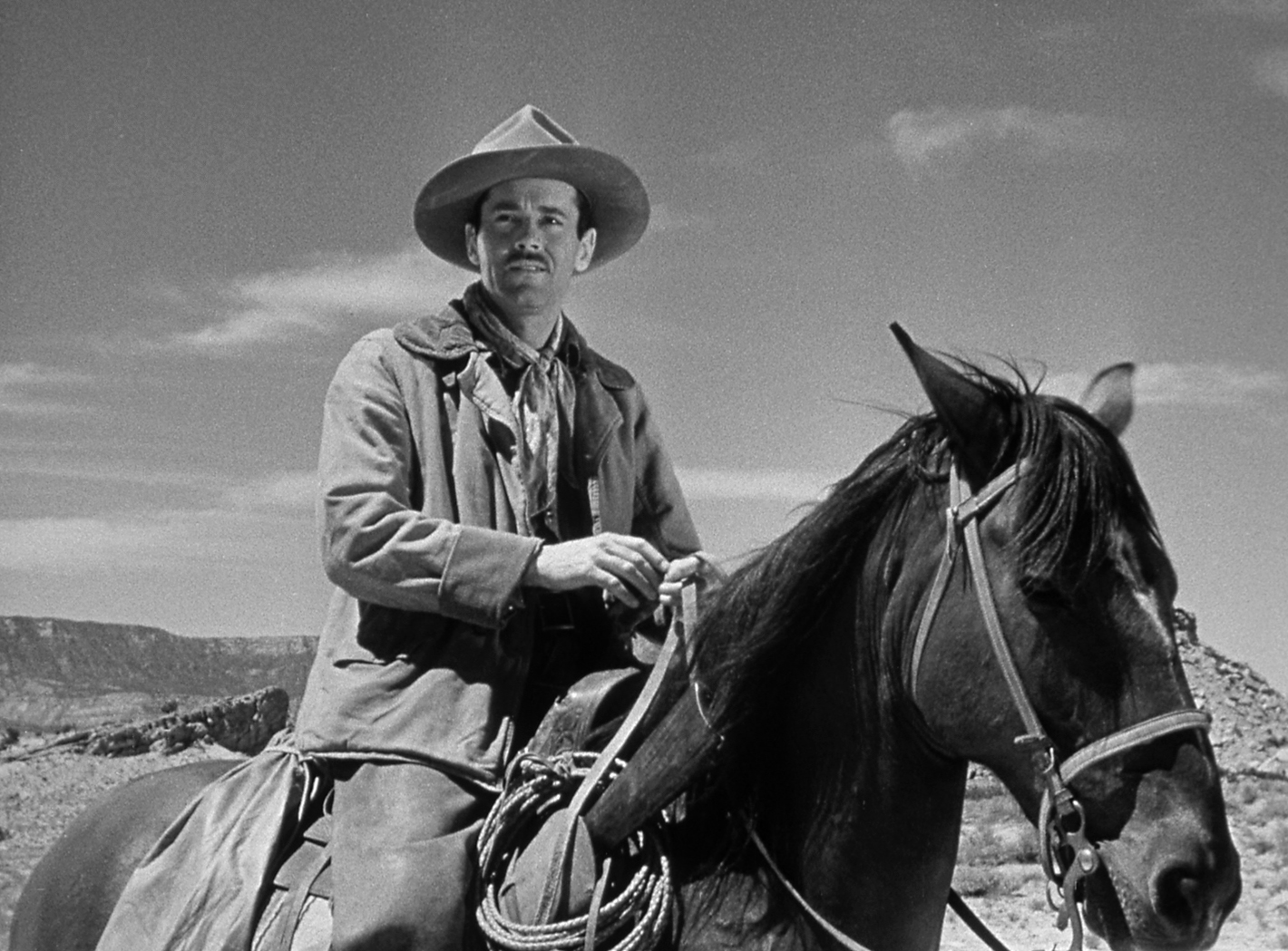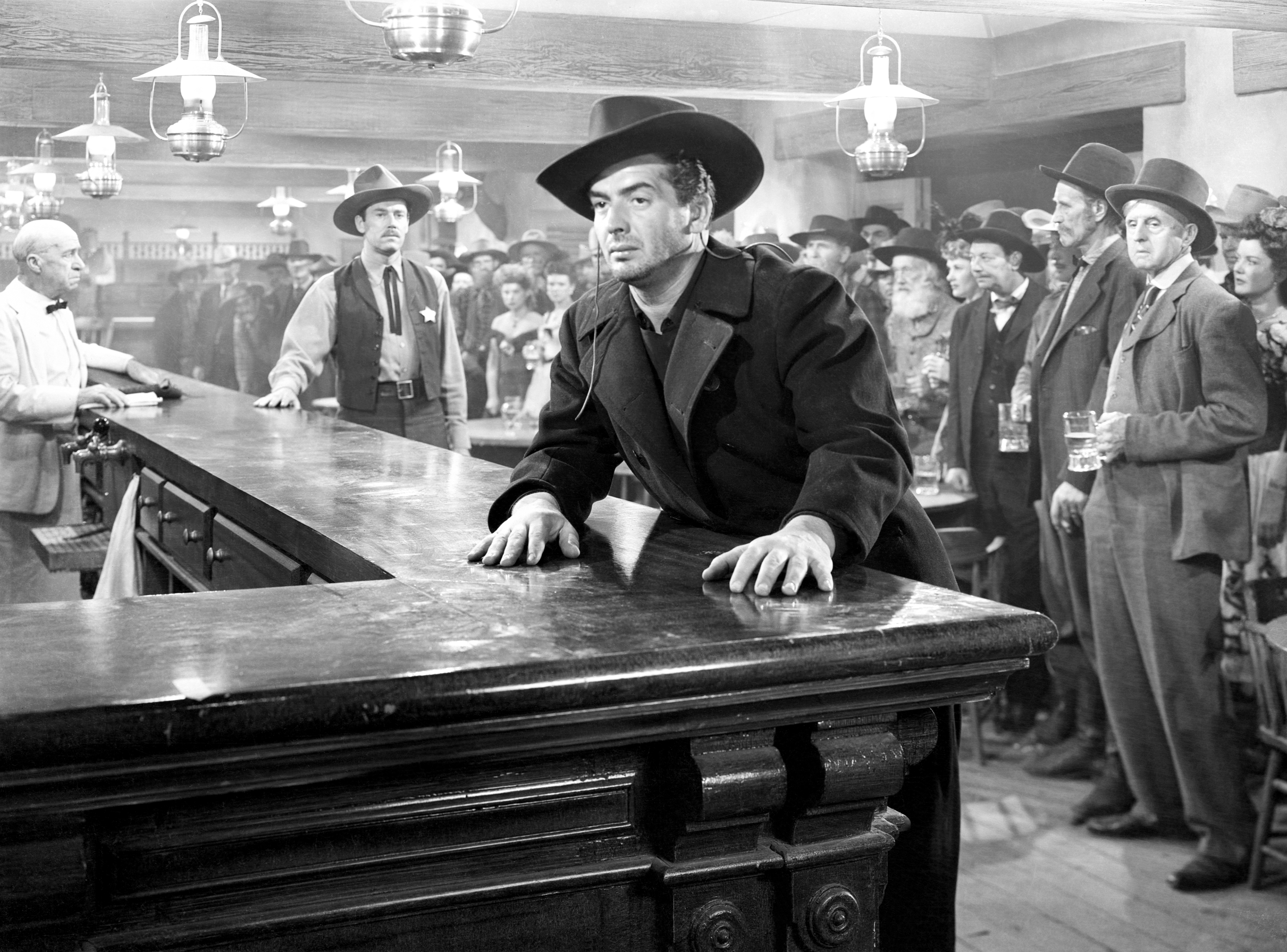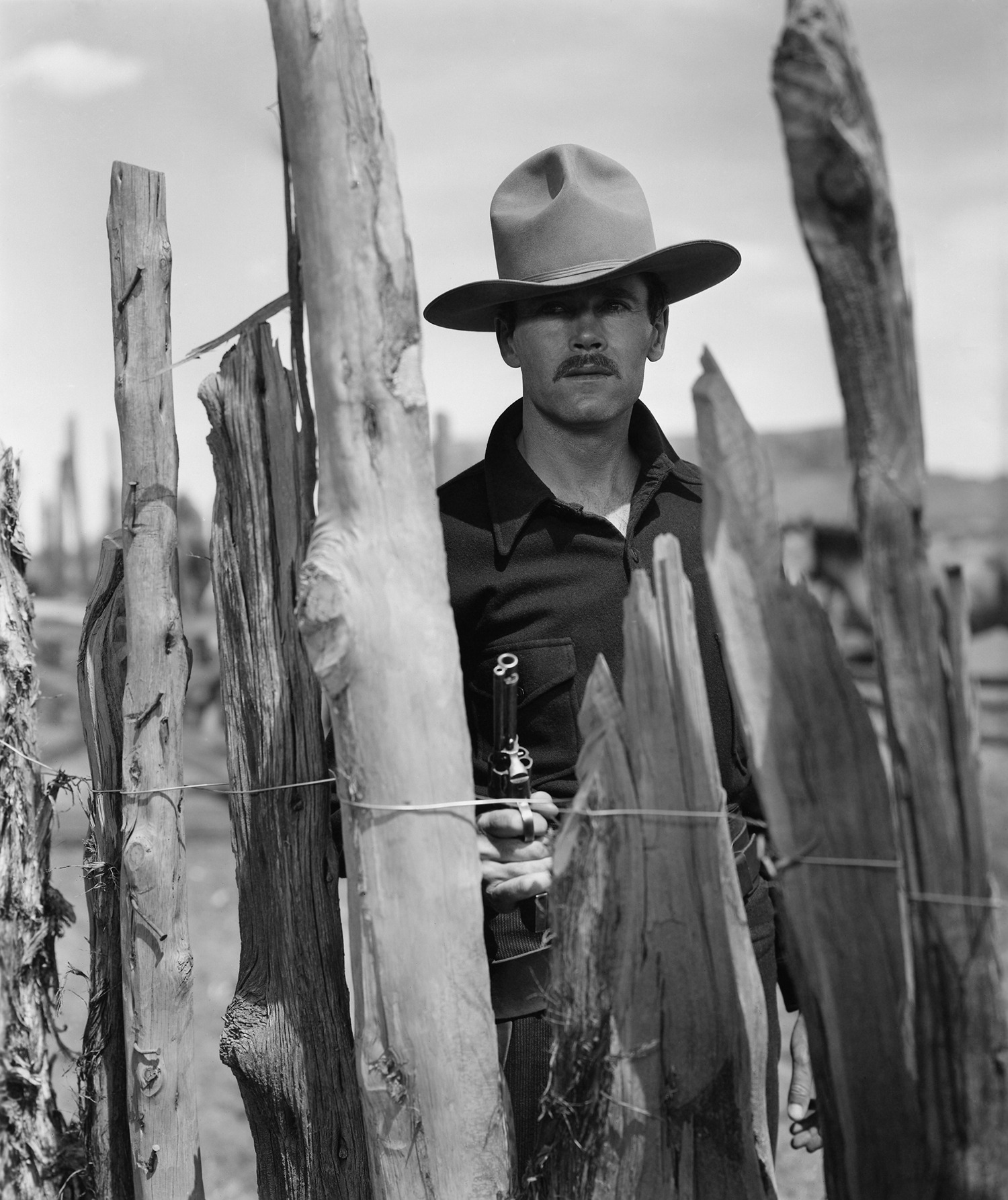CRITERION'S HEAVEN'S GATE
 Sunday, November 29, 2015 at 06:05PM
Sunday, November 29, 2015 at 06:05PM Class War, Willful Myth-Making, Fin de siècle Grandeur and Bottomless Irritation
It’s all Sergio Leone’s fault. Only he had the audacity to rain graveyard post-Beat humor and existential irony all over the sacred Western. After 60 years as the dominant mythological trope in American cinema —the first American feature, 1903’s The Great Train Robbery, was a Western —who knew the form was so played, so ripe for a toppling? Even more destructive than Leone’s cartooning of the holy Western (moral) landscape was that, in the immortal words of Clint Eastwood, “it was the first time in history the hero fired first.”
Leone’s trio of spaghetti Westerns (A Fistful of Dollars, For a Few Dollars More, and The Good, the Bad and the Ugly) formed the first domino. Four years later, Sam Peckinpah’s The Wild Bunch proved the flaming sword that swept all before it; equivalent to the first Ramones album, only bloodier. Every subsequent foray had to grapple with Peckinpah’s new cinematic West, one of paralyzing moral ambiguity, villainous heroes, and contemporary social commentary.
Peckinpah, romantic even at his most bloodthirsty, unironically furthered Leone’s themes: That the supposed heroic cowboy brotherhood proved to be male-bonding/sexual sublimation amped to the level of psychosis; that the outlaws’ only moral code was, as William Holden put it, “ten thousand dollars cuts a lot of family ties”; and that the true lure of the Old West was its opportunities for unfettered capitalism made manifest by the (slow-motion) shooting of anybody who stood between you and the money. This was not John Ford territory.
Robert Altman’s McCabe & Mrs. Miller provided the final nail. Altman presented the noble pioneer homesteader as a desperate, morals-free empire builder - Warren Beatty as an ineffectual, love-struck wannabe pimp - whose miserable, hard-earned toehold would be ruthlessly looted by better-organized, more corporate predators. Economic critique was not Leone’s or Altman’s locomotive, however.
Both wanted to strip Westerns of their simplistic, post–WWII romantic optimism and replace it with a more complex, modern, post-Vietnam, post-Beckett pessimistic vision - the romantically failed vision of those who once believed. By 1973, even Peckinpah wasn’t making Westerns anymore; his Pat Garrett & Billy the Kid is a eulogy for the form, with another shoot-out ’n’ funeral every fifteen minutes. And yet, these ferociously destructive revisionist pictures remain among the best Westerns, and the best films, ever made. Even these debunkers, at heart, loved Westerns.
Over a decade after the first temple pillars fell, Michael Cimino went to Wyoming with the world’s finest cinematographer - Altman/Spielberg collaborator Vilmos Zsigmond - several wheelbarrows full of cocaine, and as the stories go, a miniature of the Oscar he won for The Deer Hunter dangling around his neck. Supposedly he shook that miniature at anyone who dared disagree with him demanding to know - in an enraged shriek - if they had one, too. If they didn’t, they could shut (the fuck) up and do as they were told. Few movies have produced the variety and depth of deranged drug-fueled anecdotes that emerged from the Heaven’s Gate shoot. Most center on Cimino’s greed and hubris.
Few movies have been so universally reviled upon release.
United Artists supposedly went bankrupt over Cimino’s excesses. He spent close to $40 million on his artistic vision, various mountain properties, and them wheelbarrows of cocaine. But are 40 million 1980 dollars all that excessive compared to the $120 million dropped on, to cite just one egregious example, Jackie Chan’s Around the World in 80 Days?
Another Heaven’s Gate legacy — which, like the financial and pharmaceutical excesses, can’t be separated from the viewing experience — is the rabid, pack-dog chickenshitedness of the massed American film critics at the time of Gate’s release. Each tried to outdo the other in shrill condemnation, hollering that it numbered among the spectacularly worst films ever made, that it was an obscene squandering of coin, a travesty of the immortal horsey idiom. Most took a stridently high moral tone against Cimino’s mad ego, even though that’s what gets directors get hired.
Suffice to say, Richard M. Nixon's reputation got rehabilitated sooner than Heaven’s Gate's. What should be obvious in the face of that kind of critical unanimity is that the movie is a harrowing masterpiece, a poetic epic of the kind hardly attempted - by Americans at least - since D. W. Griffith, a detailed study of the pathology and sociology of class war in the guise of an action-driven historical epic wrapped around a heartbreaking love triangle with class-war implications of its own. With Cimino/Zsigmond’s wide-screen Bierstadt vistas and Leone-scale close-ups, it’s a privilege to see this new print on Blu-Ray. Those not compelled by the mythology of Westerns will be enthralled; those who crave it (Does anyone still crave it besides me?) will be transported.
Heaven’s Gate is also deeply, maddeningly annoying. Annoying in perfect proportion to its grand scale. Annoying at its most moving, annoying at its most self-conscious, and annoying at its most well-intentioned. Well, as the Spanish say, Maciado perfecion es un error. Yin & Yang
Yin & Yang
The twin avatars of this annoyance are, in order of impact, Isabelle Huppert and Michael Cimino. Huppert, the inexplicable romantic lead, plays a whore - avec integrity, bien sur - in 1890s Wyoming, torn between Kris Kristofferson’s old-money, Eastern-WASP sheriff and Christopher Walken’s immigrant murderer of immigrant cattle rustlers on behalf of the Stockman’s Association. United Artists' management went batshit that such an expensive film would star someone unknown to the American public who could barely speak English. And for once, the studio bosses were right.
At the time, Huppert had like total international art-house cred as a brimming-with-integrity arty French actress. But she also came off as a gratingly self-loving prima donna who took a creepily gleeful pleasure in spending most of her onscreen time naked while acting all innocent about it.
Among cinephiles, Huppert’s derriere was on a par with Susan Sarandon’s breasts: We knew it/they was/were going to be on display in every picture, and proudly. When the 2015 Huppert, a self-distanced, urbane echt-Parisian, disrobes, there’s an erotic/philosophical tension between her regal, armored essence and her naked bod. Not so in 1980. After seeing far too much of Huppert's bare behind in Jean-Luc Godard’s Every Man For Himself, Pauline Kale wrote in The New Yorker, “Sometimes you could swear it pouts as eloquently as her face.”
Huppert serves as the benign example of Gate’s naked (heh-heh) ambition. Cimino’s determination to make myth succeeds and fails repeatedly throughout the picture. When his aims become transparent - revealed by ten-too-many intercut shots of somebody’s ironic commentary on the action - the story falls away, leaving only the stunning impenetrability of coke-induced artistic blindness.
Cimino sought a Wagnerian scale, a self-conscious grandeur. When he achieves it, the visual/narrative results are mind-blowing, deeply moving tableau that seem wholly appropriate to the story. His particular mastery is the dialogue-free crowd scene. The best moments of Cimino’s career derive from the wedding sequence in Coppola’s The Godfather. No one can gather characters and turn them loose en masse with the community credibility that Cimino achieves. This underscores his debt to D.W. Griffith.
The film’s composer, fiddler David Mansfeld, leads off the film’s most astounding moment. He roller-skates around a canvas-roofed town hall, fiddling away, calling the immigrant villagers onto the floor. Hundreds follow him, clad in the trademark peasant outfits of eastern and northern Europe. As their sheriff, Kristofferson knows that a mercenary army, hired by the filthy-rich cattle barons of the Stockman’s Association, is en route to slaughter the entire town. The townspeople haven’t yet, as Brecht said, heard the terrible news, and this is their last revel. The dance hall and the frame become increasingly crowded as the music builds. Cimino never loses the details of individual character as each larks across the floor.
Kristofferson warns the villagers, and they turn on one another with predictable results. In the now-deserted great room, Kristofferson and Huppert take to the vast empty floor for a tender, doomed, extended waltz that’s too sweet to be borne.
After their dance comes class war with a capital C. The townspeople decide to fight and head out to meet the oncoming army. It’s among the most realistic, emotionally engaging, visually overwhelming battle scenes in cinema history. Cimino’s obviously haunted by the final shoot-out of The Wild Bunch, but he suggests a more timeless war, one harking back to Troy - composed of dust, blood, confusion, and madness. His presentation of the raw hatred of the rich for their usurpers and that of the downtrodden for their oppressors has no equal for bitterness and ferocity. They just want to kill each other, and by dint of being out West, beyond the law and armed to the teeth, they just can.
For a putatively drug-addled egomaniac, Cimino demonstrates a subtle grasp of classical structure. The first three-quarters of the nearly 200-minute film present the developing forces in opposition, each with their mores and minute idiocies. The opening twenty-minute set piece is Kristofferson’s Harvard graduation, with its implications of an Eastern elite determined to lift up the ignorant downtrodden of these here United States. It’s almost dialogue-free and proves Cimino a master of mise-en-scène from the jump. It also establishes Kristofferson as the moral center of the rapidly vanishing West: Cultured, two-gunned, shit-faced drunk, high-minded, grief-stricken, murderous, and conflicted.
The Stockman’s Association massacre is led by pompous high-WASP snotnose Sam Waterston in a performance of repellent conviction. Kristofferson’s got issues of his own as he tries to convince Huppert to flee the armed mob. Half of their scenes together are crushingly real and half seem to be between strangers reading dialogue. Still, Huppert gets better and better as the picture goes along. Kristofferson, in his prime, seems so damn American: Gary Cooper, Sam Shepard, John Doe, Kristofferson. They’ve all got that über-American face.
Cimino depicts the battle for America’s moral destiny as between the sincere, primitive immigrants and the decadent entrenched interests. The real struggle takes place in Kristofferson’s soul. And Kristofferson’s got the soul to pull it off.




